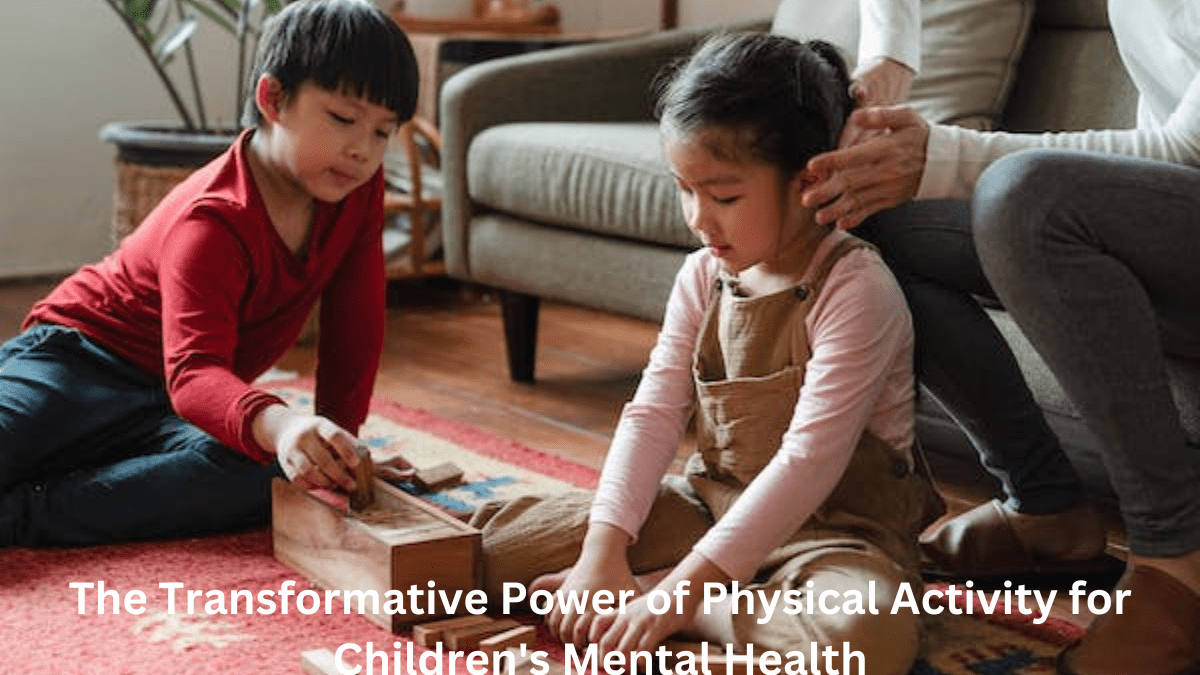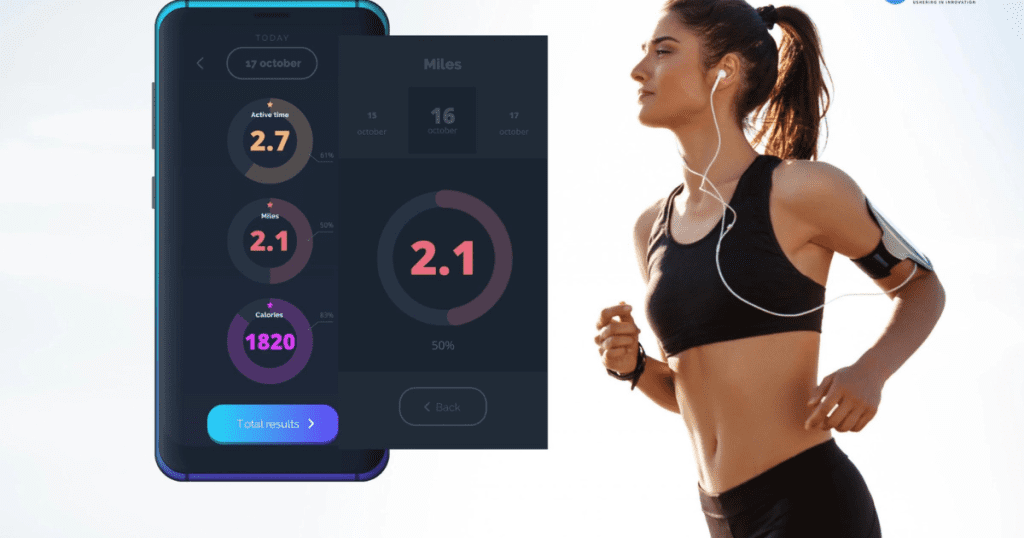Contents
- 1 Unveiling the Mental Marvels of Movement
- 2 Improved Mood and Concentration
- 3 Anxiety and Depression Defense
- 4 Classroom Triumphs
- 5 Physical Prowess: Beyond the Surface
- 6 Stress-Resistant Bodies
- 7 Endorphins – The Magic Molecules
- 8 Beyond the Physical: A Holistic Approach
- 9 Substance Use Safeguard
- 10 How Much is Enough?
- 11 Striking the Right Balance
- 12 Making It Fun
- 13 The Joy of Play: Ideas for Every Age
- 14 ·Imagination Unleashed: Pick an animal and mimic its movements, turning playtime into a creative adventure.
- 15 The Untold Story: Mental Health and Physical Activity
- 16 Why Does It Work?
- 17 An Exercise Prescription
- 18 Crafting a Lifestyle
- 19 The Power of Routine
- 20 Rewards and Recognition
- 21 The Gradual Ascent
- 22 A Realistic Approach
- 23 Guiding Lights
- 24 Conclusion: A Lifestyle Choice
Unveiling the Mental Marvels of Movement
How Does Exercise Benefit a Child’s Sense of Well-Being?
Physical activity, encompassing everything from a lively game of tag to a peaceful walk in the park, extends far beyond its apparent physical benefits. Research consistently shows that regular exercise produces a cascade of positive effects on children’s mental health.
Improved Mood and Concentration
Picture this: your child bounding across the playground, laughter echoing through the air. This lively play isn’t just fun – it’s a mood booster. Physical activity triggers the release of endorphins, the body’s natural feel-good chemicals, leading to an immediate uplift in mood. As a result, children experience improved concentration and attention, setting the stage for enhanced learning experiences.
Anxiety and Depression Defense
In a world where anxiety and depression affect even the youngest minds, physical activity emerges as a formidable defender. Team-based sports, in particular, become a shield against the shadows of these mental health challenges. Engaging in group activities fosters a sense of belonging, reduces feelings of isolation and offering a support system that can make all the difference.
Classroom Triumphs
The benefits of physical activity extend into the classroom, creating a conducive environment for academic achievement. Studies have shown that children who incorporate regular exercise into their routines exhibit better classroom behavior and academic performance. It’s not just about moving muscles; it’s about flexing the brain and setting the stage for a successful learning journey.
Physical Prowess: Beyond the Surface
Building Strong Foundations
When we talk about physical activity, we’re not just talking about jumping jacks and running laps. It’s about laying the groundwork for a healthy body. From robust lungs and a solid heart for agile muscles, the physical benefits of regular activity contribute to a well-balanced body composition.
Stress-Resistant Bodies
Life introduces stress in various forms, even for our little ones. Engaging in physical activity equips their bodies with the resilience to handle and adapt to stress. Imagine it as a shield, fortifying them against life’s challenges.
Endorphins – The Magic Molecules
We can’t ignore the magic of endorphins. Physical activity stimulates the production of these feel-good molecules in the brain. It’s not just about feeling happy during play; it’s about creating a reservoir of positivity that can be tapped into during challenging times.
Beyond the Physical: A Holistic Approach
Nurturing Healthy Habits
The benefits of physical activity extend beyond the immediate, influencing long-term habits. Regular engagement in exercise during high school and college has been linked to lower chances of suicidal thoughts or attempts. It’s not just about the here and now; it’s about fostering a foundation for a resilient future.
Substance Use Safeguard
As children navigate the turbulent teenage years, physical activity serves as a protective factor against harmful behaviors. Studies show that active high school students are less likely to indulge in alcohol, tobacco, and marijuana use. It’s a testament to the far-reaching impact of a simple commitment to regular movement.
How Much is Enough?
Now that we’re convinced of the myriad benefits, the next question naturally arises: How much physical activity is sufficient for our children to reap these rewards?
Striking the Right Balance
The American Heart Association recommends at least 60 minutes of daily physical activity for children and adolescents. This can be achieved through various activities, from traditional sports to recreational play. The key is to make it enjoyable, ensuring that the hour spent in motion becomes a highlight rather than a chore.
Making It Fun
The most crucial aspect of incorporating physical activity into a child’s routine is ensuring it’s enjoyable. They’re more likely to stick with it if they’re having fun. Ask your child what activities they enjoy and build from there. Whether playing tag, riding bikes, or engaging in dance videos, the options are diverse and exciting.
The Joy of Play: Ideas for Every Age
Younger Children
Driveway Games: Create simple games like hopscotch or basketball in your driveway.
· Outdoor Adventures: Go for a walk or bike ride, inviting the family dog to join the fun.
· Tag Team: Organize a game of tag with friends or family.
· Park Play: Spend quality time playing in the yard or at a local park.
· Hula Hoop Fun: Have a hula hoop competition, combining laughter with movement.
·Imagination Unleashed: Pick an animal and mimic its movements, turning playtime into a creative adventure.
Older Children and Teens
- Team Spirit: Join a local or school sports team to combine physical activity with social engagement.
- · Dance Delight: Enroll in studio, school, or online dance classes.
- · Virtual Workouts: Follow along with YouTube® workout or dance videos for a modern twist on staying active.
- · Outdoor Excursions: Embrace the simplicity of walking, running, jogging, or biking to keep things dynamic.
- · Personalized Fun: Tailor activities to your child’s interests, ensuring that physical activity aligns with their passions.
The Untold Story: Mental Health and Physical Activity
A Comparative Tale
It might surprise you to learn that the impact of physical activity on depression symptoms mirrors the effects of antidepressants or cognitive-behavioral therapy. Just as these therapeutic approaches delve into the intricacies of thoughts, feelings, and behaviors, physical activity takes a parallel route, offering a holistic approach to mental well-being.
Why Does It Work?
The Science Behind the Smiles
The influence of physical activity on mental health isn’t mere coincidence; it’s rooted in science. Our bodies release neurotransmitters like serotonin, dopamine, and norepinephrine when we exercise. These chemical messengers regulate mood, stress response, and overall emotional well-being.
An Exercise Prescription
Consider this a prescription for a healthier, happier mind: a dose of regular physical activity. The prescription pad may not be paper, but the playground, the park, and the dance floor become the canvas for a masterpiece of a child’s well-being.
Crafting a Lifestyle
A Family Affair
Encouraging physical activity is more than just a solitary journey. It’s a family affair. Children are more likely to follow suit when parents actively participate, whether by taking a stroll, joining a sports team, or dancing in the living room. Lead by example, showing that movement is not a chore but a delightful aspect of daily life.
The Power of Routine
Transform physical activity into a non-negotiable part of your family’s routine. When daily walks become as ingrained as mealtime, it sends a powerful message. It communicates that movement is not an additional task but an integral part of a healthy, joyful lifestyle.
Rewards and Recognition
Motivating Through Recognition
Motivation often thrives in a climate of recognition. For younger children, daily prizes like stickers for active time create a tangible link between effort and acknowledgment. Older kids may find inspiration in working toward weekly activity goals, with rewards ranging from choosing the movie for family night to earning extra screen time.
The Gradual Ascent
Embarking on a journey of regular physical activity can be manageable. Begin with small, achievable goals, such as short breaks for stretching or walking throughout the day. As routines solidify, gradually increase the duration and intensity. It’s not about perfection; it’s about progress.
A Realistic Approach
Embracing Imperfection
In the realm of physical activity, perfection is not the goal. Acknowledge that these are not normal times, and setting unrealistic expectations only adds unnecessary pressure. Any movement is beneficial. Every bit counts, whether a brisk walk or a playful game in the backyard. It’s not about reaching an arbitrary benchmark; it’s about nurturing a lifelong love for movement.
Resources for the Journey
Guiding Lights
As we embark on promoting physical activity for our children’s mental health, reliable resources serve as guiding lights. These sources provide valuable insights into creating a well-rounded approach to well-being.
· American Heart Association: Explore strategies to help children be physically active.
· President’s Council on Sports, Fitness, and Nutrition: Discover various ways to stay active, catering to diverse interests and preferences.
· American Academy of Pediatrics: Access recommendations on daily physical activity for children, ensuring a holistic approach.
Conclusion: A Lifestyle Choice
In conclusion, the benefits of physical activity for children’s mental health extend far beyond the playground. It’s not just about moving bodies; it’s about nurturing minds, fostering resilience, and laying the foundation for a fulfilling life. Embrace physical activity as a lifestyle choice, a shared family experience, and a potent tool for shaping resilient, happy, and healthy individuals.
Remember, it’s not about the perfect routine; it’s about the joy of movement.




